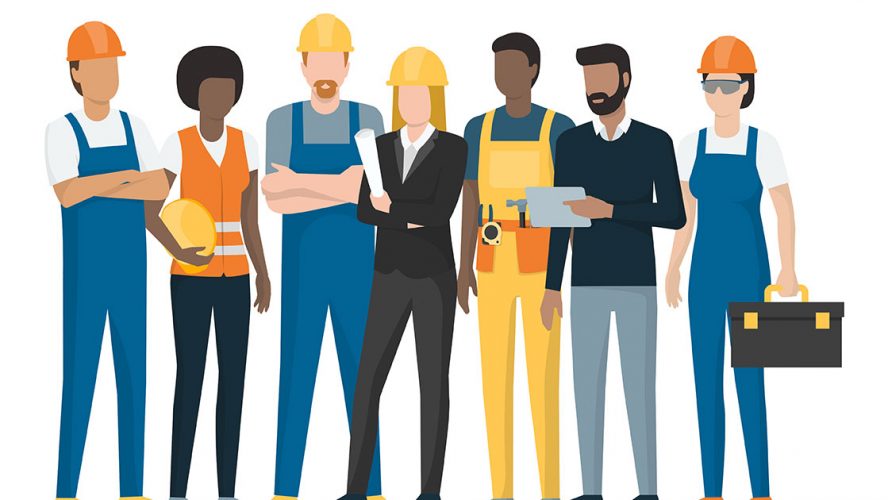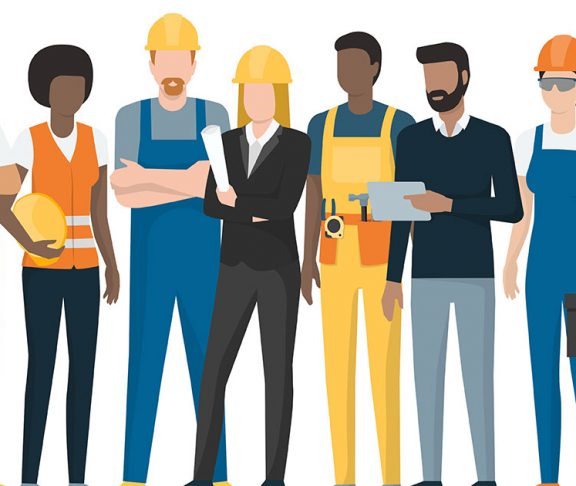Ten billion people — more neighbors, more family and more friends. Things are about to get cramped.
We estimate that this growth will require building 1,000 buildings per day. We will need a lot more housing, schools, healthcare facilities, shopping, government and safety services; more clean water and waste water treatment facilities; and more sustainable energy resources. We will need more roads, rail, public transit and ports to move people and goods.
This is as an opportunity to change the way building is done. City planners, designers and construction professionals are critical for us to keep pace with this population challenge.
Fortunately, construction is in the midst of an exciting technological shift. Project teams are trading their paper processes for iPad apps, and drones are buzzing over construction sites collecting digital data. Still, there’s much work to be done to rise to meet the building demand.
Digitizing construction
Construction is frequently associated with big machines, big noise and, sometimes, big delays that are tied to the complexity of bringing a building to life.
The most sophisticated construction projects on the planet today start digitally in the cloud. People design, build and operate their project with a 3D model before it ever takes shape in the physical world. Digital construction offers an extraordinary opportunity to cut waste — time, money and material — and to reduce the impact on our planet.
Designers and builders connect through mobile devices, collaborate and make decisions together in real time using virtual and augmented reality.
Machine learning technology on the construction site makes it possible to gain insights from volumes of construction data collected at sites each day. Project teams can use big data to make more informed decisions and to prioritize and manage risks to budget, time and worker safety.
AECOM is a global leader in the architecture, engineering, and construction industry. AECOM recognized the potential benefits early on and made the digital transformation. According to John Kizior, AECOM’s Global Director of Project Technologies, going digital paid off in dividends on the recently completed Barclays Center in Brooklyn, New York.
“Typically, on a project the scale of the Barclays Center we would spend from nine to eleven percent of the project time on unresolved issues in the field, which would normally lead to costly change orders.” said Kizior. “After moving to the cloud, our team experienced only five major conflicts which were more easily and quickly resolved.”
As Benjamin Franklin is famous for saying, “A penny saved is a penny earned.” Every dollar counts in the narrow-margin construction industry.
Workforce of the future
McKinsey & Co.’s report “Imagining Construction’s Digital Future,” suggested five opportunities for the construction industry. McKinsey reports the “shortage of skilled labor and supervisory staff will only get worse. These are deep issues that require new ways of thinking and working.”
It’s clear there is no scarcity of skilled jobs in the construction industry, and the need is only expected to grow. However, there is a scarcity of advanced skilled workers to fill those jobs. Is a Silicon Valley tech hiring spree the answer? To fill these jobs, the industry needs to attract millennial workers. This generation lives on their iPhones, grew up with gaming consoles, are conversant in virtual reality headsets and tinker with 3D printing. In addition to hammers and nails, these are the new tools of construction.
Andy Leek is the Virtual Design and Construction Director at St. Louis, Missouri-based PARIC, an innovative general contractor, construction management and design-build firm. Five years ago, the company brought Leek to the team to digitize the construction process in the cloud. Leek knows who the industry needs.
“For many students, this is the first time they are seeing commercial applications of drones, laser scanners and robotics used on a job site and they are surprised by the heavy use of technology in the construction world,” Leek said. “This new generation of workers are already heavy consumers of technology, and most of them are already comfortable with the same smart phones and tablets we use to manage work on our projects.”
The construction industry is changing quickly, and that’s a good thing. If we are to build more with less and deliver better outcomes, the future of construction must be digital. You can count on the world’s next wave of construction jobs and construction projects being high-tech and cloud connected.

